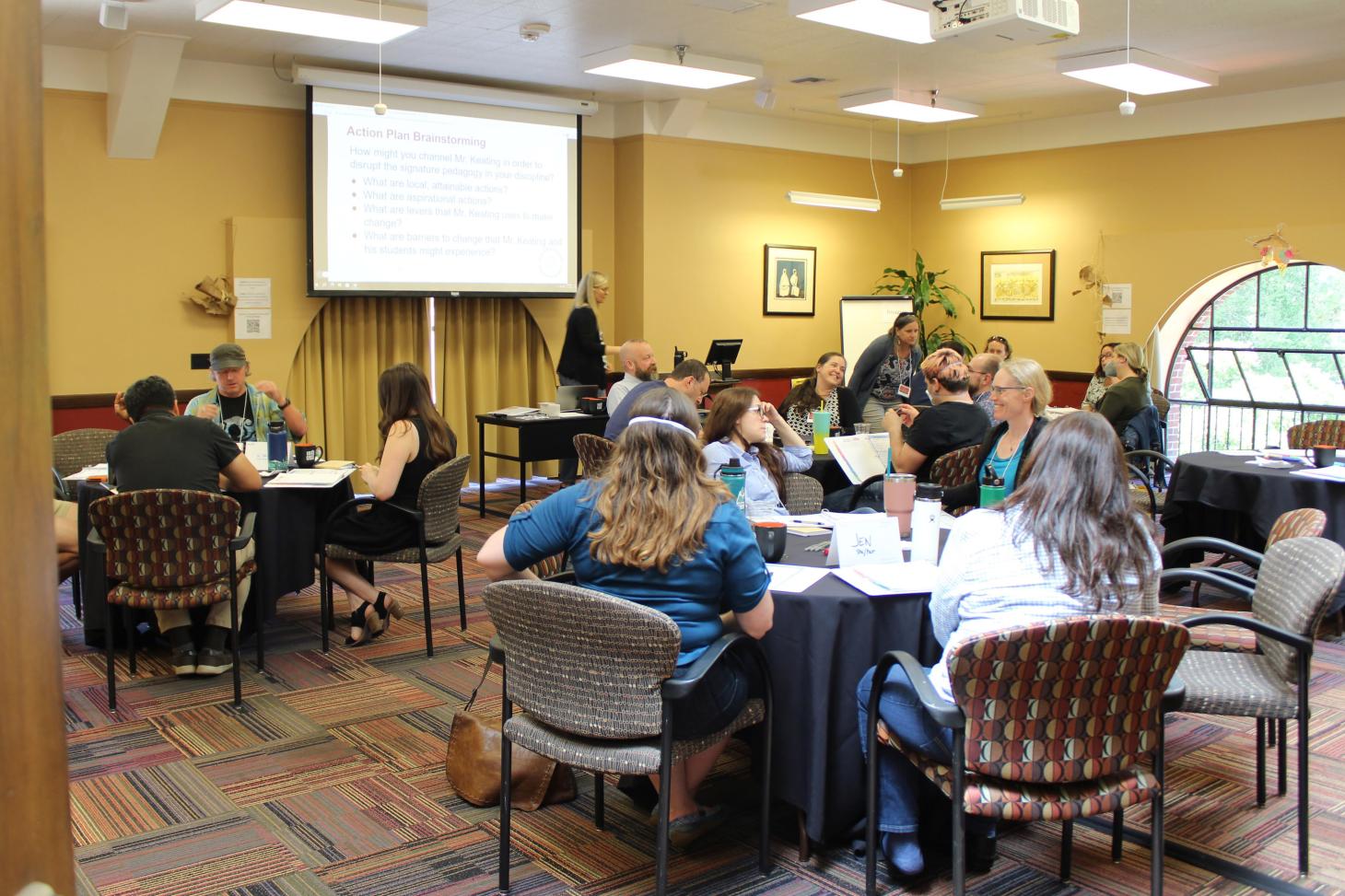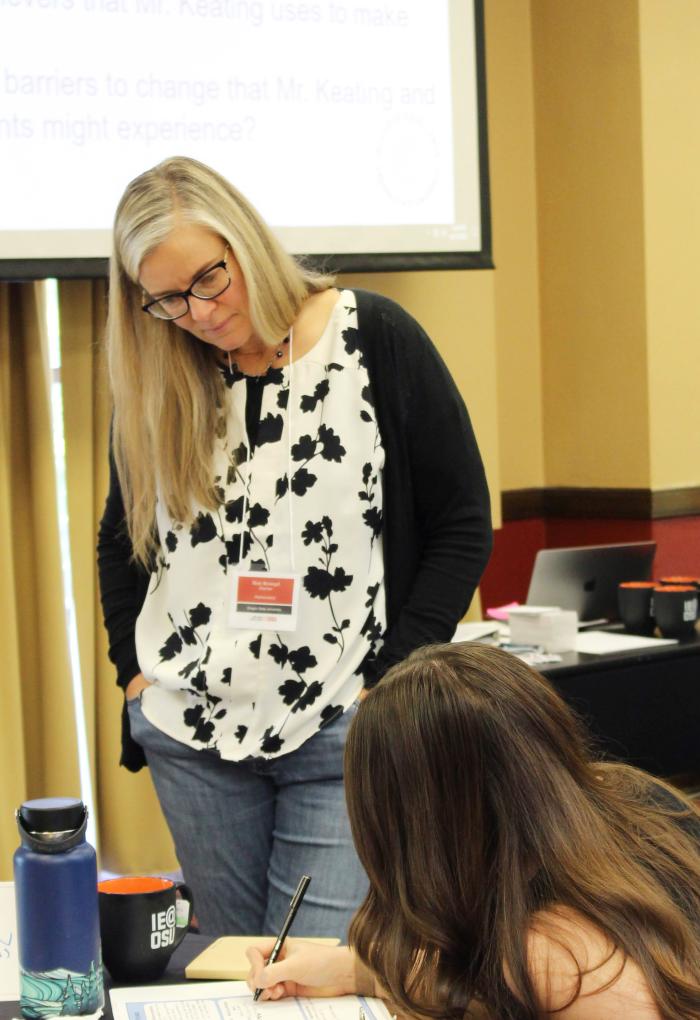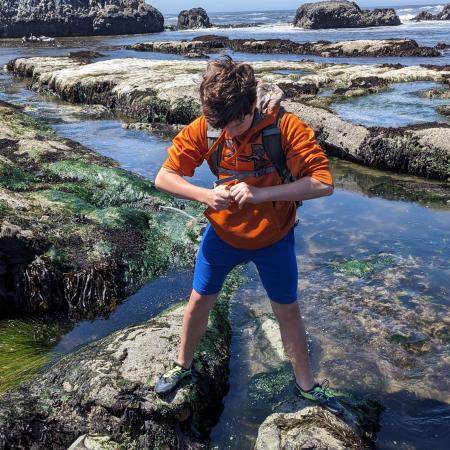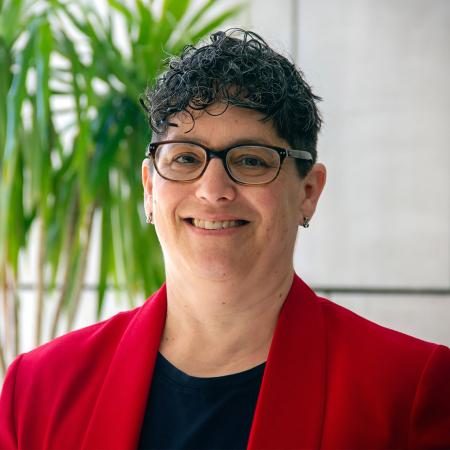“I think what IE has done is given a space for and a framework for faculty to really work through this process in a way that’s meaningful to them – through an approach that allows them to have a product at the end they can actually use,” said Kameron Kadooka, Director for Equity, Access and Inclusion at the College of Science.
The action plans generated by fellows vary across disciplines. Some instituted student surveys designed to create a more holistic understanding of their students; one facilitated transportation to a women-in-physics conference; some made changes to lecture content to increase gender-affirming language; and others made adjustments to include social impacts in biology curriculum in an effort to produce more well-rounded healthcare workers.
Summaries of faculty and staff action plans shared on the Inclusive Excellence website provide a deeper look at how course materials and student interactions were adapted to become more inclusive.
The need for the inclusive excellence initiative
Data from Oregon State shows the gap in graduation rate for underrepresented minorities and Pell-eligible students ranges from 6 to 18% across various science disciplines, indicating science is not yet retaining underrepresented minority students at the same rate they’re retaining students from majority groups.
That trend in STEM is not exclusive to Oregon State. According to a 2019 study from the National Science Foundation, Black or African American workers made up only 9% of STEM workers in the United States. Hispanic or Latinx workers made up 14%. Women still represented less than a quarter of the working population in physical science, engineering and computer science. Anyone with an intersectional identity had increasingly lower representation.
While there may be different barriers to access for members of marginalized groups on individual levels, one thing the IE@OSU program seeks to address is increasing a sense of belonging for all students – which IE@OSU leadership theorizes may be a key to students’ decisions to persist in their STEM education.
Between the time students enter and the time students graduate, they make one decision over and over: whether to persist or not.
“Between the time students enter and the time students graduate, they make one decision over and over: whether to persist or not,” shared Lou Wojcinski, instructor in the chemistry department and a fellow from the 2020-21 cohort. “And we have to be deliberate about building environments where students can say yes to persisting. It’s going to get difficult — things are going to go badly at some point—and you have to make the decision to continue or not. And we have to build these spaces where our students make the decision to persist.”
Changing the tides
“Our intentional goal at the beginning was to take what we know to be best practices in STEM education and to partner them with inclusive excellence,” said Lori Kayes, associate department head and senior instructor II in the Department of Integrative Biology and IE@OSU project leader.
Teaching faculty don’t have to figure that out in a vacuum, she said. With science educators guiding other educators in STEM, it creates attainable goals for integrating access and inclusivity into the intensive instructional objectives already in place.
Kadooka said IE@OSU has done a lot for “proof of concept” at Oregon State. Fellows who have successfully integrated changes to boost inclusivity and access in STEM have proven that while it takes time and effort to overhaul course materials and alter teaching mechanisms, it is possible, even along with regular research and teaching responsibilities.
Mary Beisiegel, professor in the department of mathematics and mathematics education researcher said this kind of development is what teachers need at any level — K-12 or post-secondary. “This is 50-60 hours in a year focusing on content, in community with people, while incorporating known best practices in teaching. I think that really makes IE@OSU stand out.”






